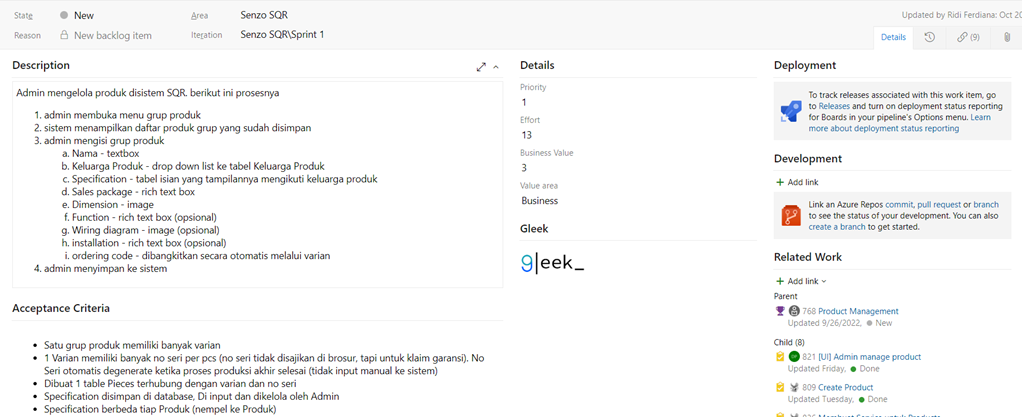Product Backlog in Azure DevOps
Azure DevOps has a feature namely Azure Boards. As we know, Azure Board is a requirement management system in our formal or agile process. On this article, we will discuss how to estimate the product backlog in Scrum or to estimate the user story in Agile process. In Azure boards you can fill the comprehensive information such as:

Estimating the product backlog
After you complete the product backlog. It is time to fulfill the estimation model. The estimation model can be established in Planning Game or Sprint Planning. In the sprint planning you can estimate:
Priority. There are four level. It is defined by the customer
- Level 1 – Urgent and Important
- Level 2 – Not Urgent but Important
- Level 3 – Urgent but not important
- Level 4 – Not urgent and not important
Effort. You can use Fibonacci or the Power of Two estimation. It is defined by the developer
- Fibonacci: 1, 2, 3, 5, 8, 13
- Power of Two: 1, 2, 4, 8,
Business value. Business value is communicated with customer and defined by the product owner
- 1 – essentially needed
- 2 – adding business value
- 3 – nice to have
Value area. it relates the business value
- Business process: the product backlog provides better business process transformation for the business.
- Architecture: the product backlog provides better reliability, security, performance, etc.
Tips on estimation model in Product Backlog
There are two types of estimation in product backlog
Estimation can be achieved by using story points.
- Relative estimation: the user story of product group is 13 points
- Absolute estimation: 13 points x 3 hours / points = 39 hours. That is best estimation. You can find normal case in 39 hours x 125% = 48,75 hours. How about the worst case? Can you guess it.
Do you have idea how to make the estimation better? Put it in the comment section.